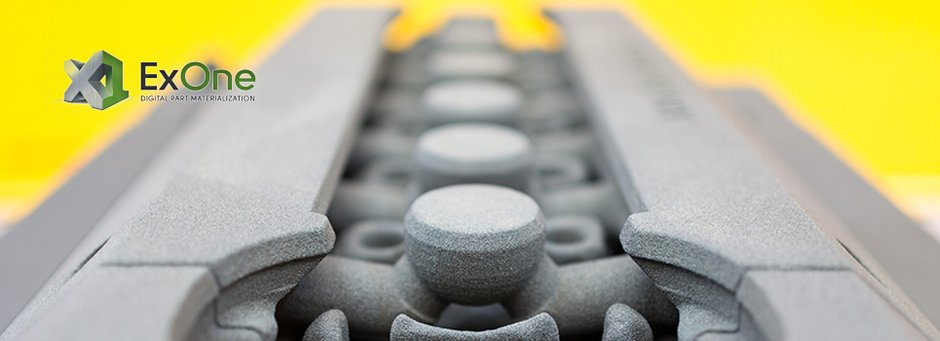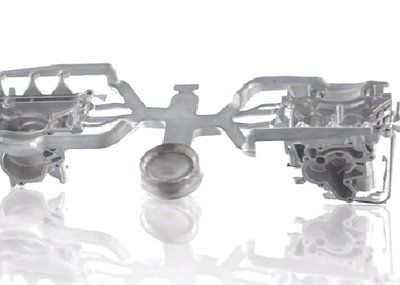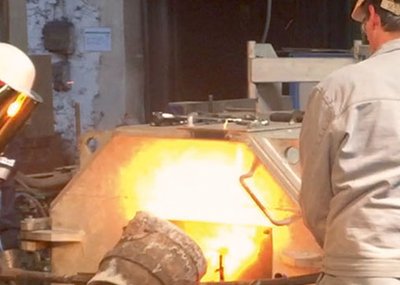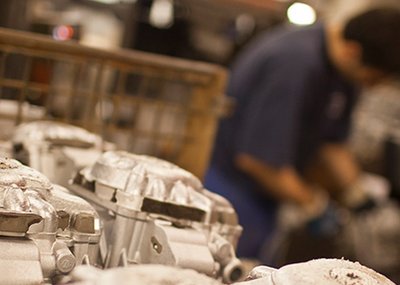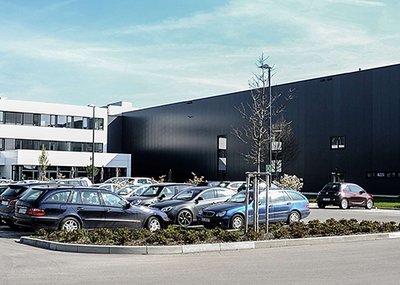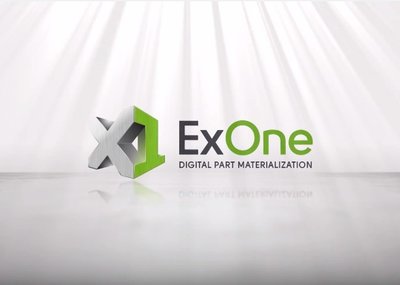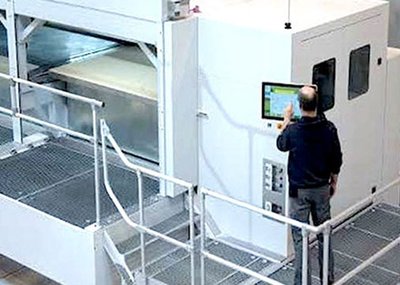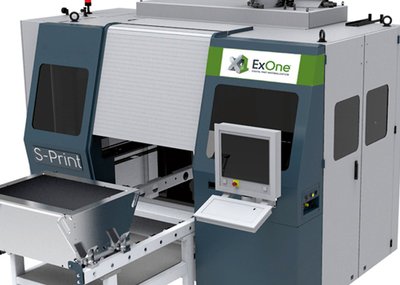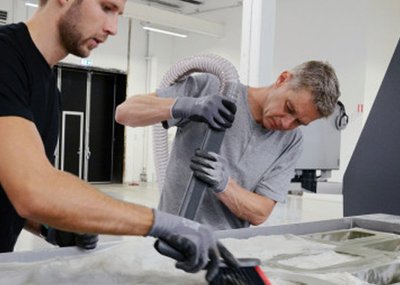Reverse Engineering and 3D printing help to reach goals
Industry 4.0, Foundry 4.0, Guss 4.0 - nowadays developments are occurring so fast that instead of new concepts, only version designations are being assigned. With its vision of Guss 4.0, Christenguss AG of Bergdietikon in Switzerland is also blazing the trail into a digital future.
The real and the virtual world are increasingly growing together. Industry 4.0 - the fusion of modern information and communications technology with production – has become an essential development and is currently a much discussed topic. There are already a few companies in the foundry industry implementing innovative solutions on the way towards Foundry 4.0. From the outset, Christenguss AG in Switzerland Aargau has been committed to progress. The constant pursuit of modernization and optimization mean that Christenguss is already presenting itself as a top modern foundry that manufactures complex sand casting molds in a 3D printing process. It is in this way that the Bavarian company ExOne from Gersthofen near Augsburg provides a valuable service with an S-Max production printer. This allows the foundry the production of sand molds of the highest quality and great individuality, from batch sizes upwards. The innovative 3D process also takes sustainability into account, as ExOne Sales Manager Holger Barth explains: "Thanks to maximum process reliability and high product quality, the rejects are reduced to a minimum, and only the parts that are effectively needed are produced. This saves resources, because the energy required for the remelting of defective components is reduced."
Quality, individuality and process safety
These points also convince Florian Christen, CEO of the traditional family business in its fourth generation and a man with a strong drive for innovation. He sees his company as an innovation and technology leader in the field and would like to make it the most advanced in the industry. In his own words, he even plans to "fundamentally change the entire foundry industry with innovative Ideas." Christen wants to consciously use the opportunities offered through digitization in the foundry – both for itself and for its customers. His vision is called Guss 4.0 (Guss is a play on words in German, meaning "cast" or "casting"). If in the future things go according to his wishes the production of each individual casting will be able to be automatically controlled and regulated. The desire to increase efficiency and to optimise product quality forms the background of his plans. Besides Guss 4.0, which is the vision of a fully automated casting process, Christenguss is putting its faith in using the latest technology in the digital detection of raw parts. This is a costly undertaking, especially due to the fact that in older models, it is often the case that no drawings or original data are available (anymore) to form the basis of the casting's digitalization. To also avoid storage, insurance and inspection costs and to prevent tool loss, the tool data can be digitized and archived as a precaution.
In each of these cases, the solution is "reverse engineering", i.e. detailed reverse engineering. In conjunction with 3D printing, this is not only an efficient method for simulating parts that are no longer available, it is often the only way to reconstruct certain components quickly and at relatively low cost. Christenguss uses the ExOne S-Max for 3D printing.
Efficient method for simulations
Since the digital capture of castings using laser scanning are pushed to their limits especially when it comes to complex inner contours (Image 1), in this case Christenguss also has the option to detect with a CT scan. In this process, the raw part is x-rayed three-dimensionally so that even the most complex inner contours are mapped. A dataset is then generated in the STL format from the CT scan (Image 2). This dataset or the corresponding same point-clouds are read in the course of reverse engineering and the data is aligned to the coordinate system. After performing data analysis, non-cast-relevant parts are removed and the polygons are optimized. Using SolidWorks design software, the part is then constructed digitally and the casting systems and the mold are drawn (Image 3). Then, the mold is printed at Christenguss on the ExOne S-Max and cast on site. Lastly, the finished cast blank finally undergoes a visual inspection. The timeline for the entire process from the CT scan to the finished blank only amounts to about three to four weeks. Thus, the respective digital three-dimensional data can be obtained very quickly from any existing object of any size or shape without the original data.
Specialist on tool-less mold manufacturing
"Obsolete parts can thus be quickly reproduced in reverse engineering by means of the digital process," confirms Holger Barth of ExOne. "For example, if the original manufacturer is no longer in business or no longer offering the part." He also makes the point that Christenguss has become a real specialist in the field of tool-less mold production – particularly by using the S-Max-printer: "It produces complex sand cores and molds directly from CAD data, eliminating the need for physical models. In this way, Christenguss even produces complex inner contours with a printed sand core from the S-Max." Changes and optimizations in the CAD data can be immediately implemented in the product design and the casting can therefore start within a short time and without additional tools. There is also a great freedom of design when printing detailed, high-precision cores and complex geometries.
In conclusion, Florian Christen again refers to time and cost savings: "Thanks to the 3D-printing of the molds, positioning systems can also be integrated directly into the sprue for a casting. As a result, this means specific set-ups for machining and plastering of parts are only necessary to a very limited extent." This is another benefit for the foundry and thus also for their customers – and a wonderful prospect for Florian Christen's vision of Guss 4.0.
Partner
Foundry Corporate News
Topics 3D Printing
On the way to "Casting 4.0"
Reading time: min
[0]

